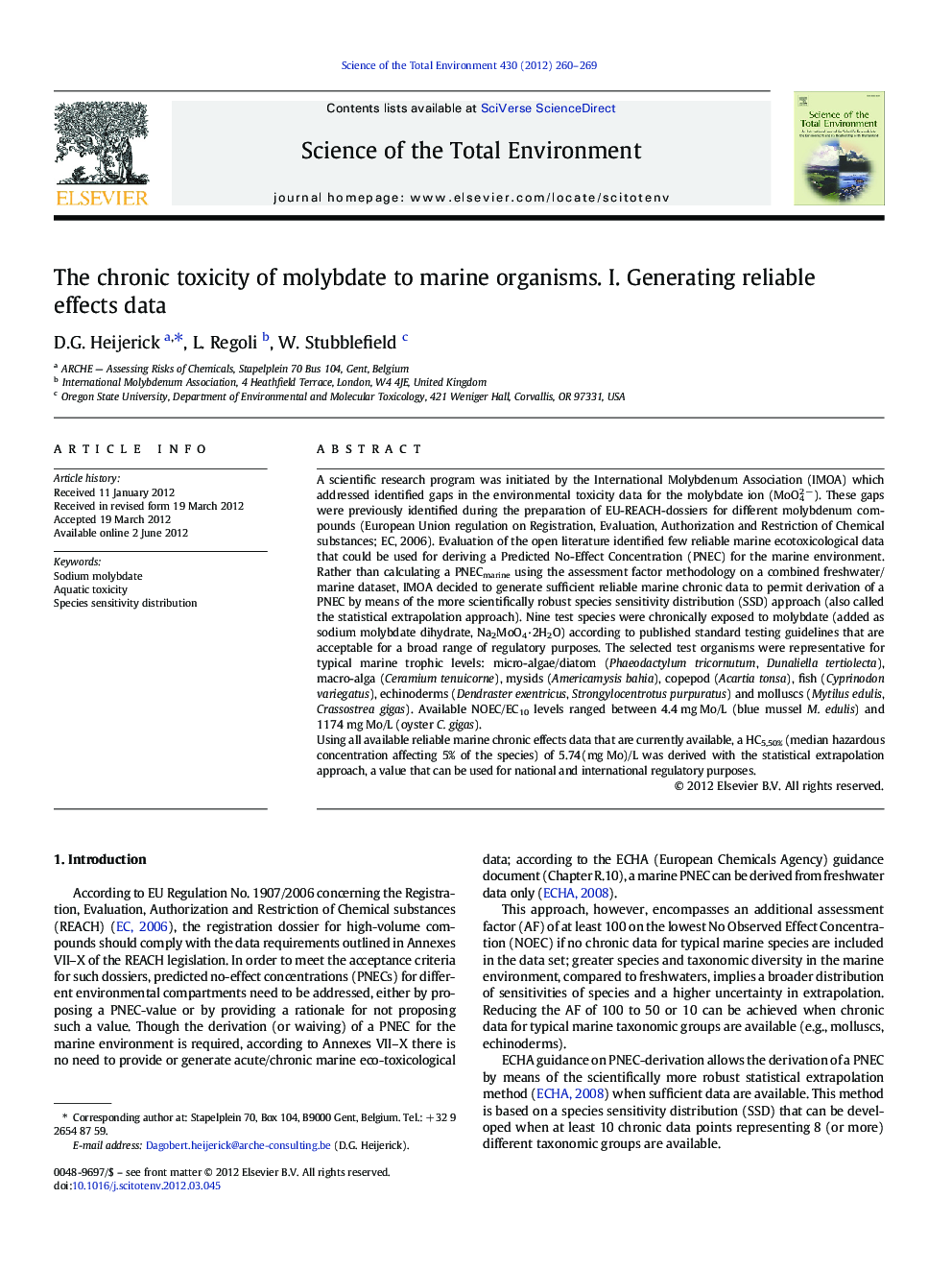| کد مقاله | کد نشریه | سال انتشار | مقاله انگلیسی | نسخه تمام متن |
|---|---|---|---|---|
| 4429335 | 1619822 | 2012 | 10 صفحه PDF | دانلود رایگان |

A scientific research program was initiated by the International Molybdenum Association (IMOA) which addressed identified gaps in the environmental toxicity data for the molybdate ion (MoO42 −). These gaps were previously identified during the preparation of EU-REACH-dossiers for different molybdenum compounds (European Union regulation on Registration, Evaluation, Authorization and Restriction of Chemical substances; EC, 2006). Evaluation of the open literature identified few reliable marine ecotoxicological data that could be used for deriving a Predicted No-Effect Concentration (PNEC) for the marine environment. Rather than calculating a PNECmarine using the assessment factor methodology on a combined freshwater/marine dataset, IMOA decided to generate sufficient reliable marine chronic data to permit derivation of a PNEC by means of the more scientifically robust species sensitivity distribution (SSD) approach (also called the statistical extrapolation approach). Nine test species were chronically exposed to molybdate (added as sodium molybdate dihydrate, Na2MoO4·2H2O) according to published standard testing guidelines that are acceptable for a broad range of regulatory purposes. The selected test organisms were representative for typical marine trophic levels: micro-algae/diatom (Phaeodactylum tricornutum, Dunaliella tertiolecta), macro-alga (Ceramium tenuicorne), mysids (Americamysis bahia), copepod (Acartia tonsa), fish (Cyprinodon variegatus), echinoderms (Dendraster exentricus, Strongylocentrotus purpuratus) and molluscs (Mytilus edulis, Crassostrea gigas). Available NOEC/EC10 levels ranged between 4.4 mg Mo/L (blue mussel M. edulis) and 1174 mg Mo/L (oyster C. gigas).Using all available reliable marine chronic effects data that are currently available, a HC5,50% (median hazardous concentration affecting 5% of the species) of 5.74 (mg Mo)/L was derived with the statistical extrapolation approach, a value that can be used for national and international regulatory purposes.
► Evaluation of existing data on molybdenum toxicity in the marine environment.
► Identification of taxonomic groups for which molybdenum toxicity data is lacking.
► Chronic toxicity tests with molybdenum in the marine environment.
► Development of a species sensitivity distribution with chronic ecotoxicity data.
Journal: Science of The Total Environment - Volume 430, 15 July 2012, Pages 260–269